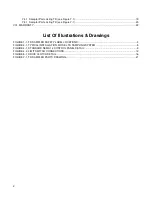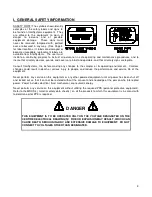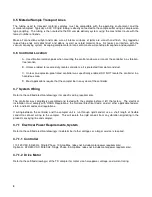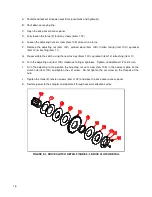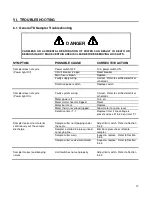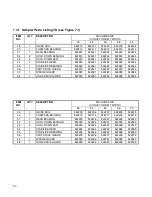
7
III. GENERAL INSTALLATION REQUIREMENTS
3.1 Receiving Inspection
Carefully inspect the sampling system for damage as soon as it is received. Also, verify that the quantity of parts
or packages actually received corresponds to the quantity shown on the packing slip. Report any damage or
shortage to the delivering carrier as soon as possible. InterSystems' responsibility for the equipment ended with
acceptance by the delivering carrier. Refer to the bill of lading.
3.2 Pre-Installation Preparation
Note, before starting sampling system installation, study this manual, the certified drawing(s) furnished with the
system, and other applicable documents (including, but not limited to OSHA Regulations; the National Electrical
Code; and all other applicable federal, state, and local codes and regulations).
3.3 Location
The TD sampler is typically mounted on the end of a belt conveyor carrying the product to be sampled as in Figure
2-1. Install the sampler as it is shown and noted on the certified drawings. The sampler may or may not be
supplied with a partial or a whole conveyor discharge hood. Provide necessary access and maintenance
platforms for ease of maintenance.
The sampler is to be installed only as shown on the certified drawing(s). If an alternate mounting arrangement is
desired contact InterSystems prior to installation for proper guidance. The sampler is of a general design with
modifications specifically for your application. It may be necessary to rework the sampler in order for it to function
properly if you alter the application.
3.4 General Mounting Guidelines
DANGER
SAMPLER CANNOT SUPPORT ANY OTHER EQUIPMENT OR CONVEYING LINE!
COLLAPSE OF THE WHOLE SYSTEM CAN CAUSE DEATH, SERIOUS INJURY, AND
EXTENSIVE DAMAGE TO EQUIPMENT. PROPERLY SUPPORT ALL SPOUTS,
CONTAINERS, AND CONVEYING LINES.
The sampler needs to be installed, as shown and noted on the certified drawings.
A. Locate and mark the desired mounting location of the sampler.
B. Position the sampler. Weld and/or fasten in place.



